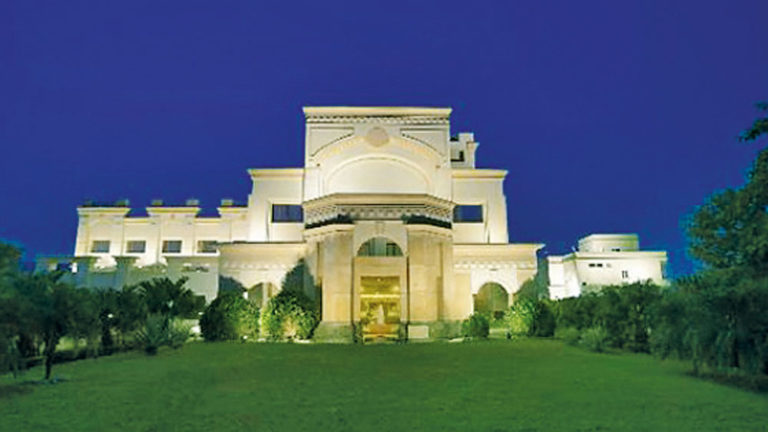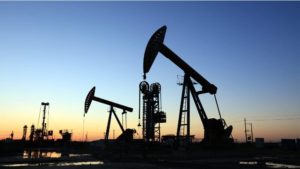Industry View Point
“While the ease in curbs did come as a relief to the hospitality industry, most remain wary of the constant start-stop nature of restrictions imposed by the government. Easing of restrictions is music to the ears for anyone in the hospitality industry and we welcome the move. But, one of the biggest issues that concern restaurants today is the constant start-stop nature of restrictions. Not just owners, restaurant employees are in constant fear of when the next round of restrictions will be imposed. They don’t know if they will have their jobs in a month from now, and if they should continue to stay in the city or go back home.”
The vision document proposes four strategic pillars to achieve the goals, including a shared national tourism approach, value accretive regulations, investment drivers and market excellence. It recommends tourism to be a concurrent subject as a shared execution between the Centre & states, and setting up of a National Tourism Council of PM and CMs, among others.
The vision also suggests travel credit for domestic travel and MICE (meetings, incentives, conferences and exhibitions), single-window e-clearance for all projects and national seamless tourist transportation. Moreover, establishing five mega tourism zones is also recommended to achieve the outlined objectives, besides having global tourism brand ambassadors in all markets and Rs 5,000-crore annual average tourism expenditure by the Centre and equivalent by states.
The investment drivers suggest setting up 200 centres of excellence across states through Swadesh Darshan and Prasad schemes each with to 0.1 million foreign tourists and 20 million domestic tourists.
After almost six quarters of forgettable quarters, holiday season has brought some of the shine back to the hotel industry. This was the sector that had remained one of the worst hit sectors due to pandemic. The sector, which employs large number of population and contributes a significant portion of India’s annual GDP, has been hit hard by the restrictions and curfews imposed by Indian government as well as state governments. Many of these businesses had been brought to a standstill as they were merely allowed to deliver food that qualifies as an essential service. The complete closure of operations, led to humungous revenue loss for the sector.
Deep Fall
Extended lockdown, restrictions on travel, closure of international flights and curtailed cost for business travel led to unprecedented fall in hotel occupancy. The industry’s average occupancy hit rock bottom of single digit in April, 2020. Marginal recovery was seen in subsequent months, aided by quarantine stay provided at subsidized rates by key hoteliers. The Indian hotel industry has taken a hit of over Rs 1.30 lakh crore in revenue for the fiscal year 2020-21 due to the impact of the COVID-19 pandemic. Industry total revenue in FY2019-20 stood at Rs 1.82 lakh crore so approximately 75 per cent of the industry’s revenues got wiped off. The Indian hospitality industry recorded revenue per available room (RevPAR) of Rs 1,582 during FY21, the lowest in the last 22 years, according to a report by Hotelivate. This, according to the hospitality industry consulting firm, is a 60.8 per cent decline over the last year (FY20).
Cost Measures Helped To Remain Afloat
During the tough times, industry took tough measures to remain afloat. The domestic hospitality industry took measures to survive in the crisis. To fill the void created by international travel segment, the industry promoted domestic leisure travel through various initiatives at state and national level. The industry opted for stringent cost cutting on key verticals like employee cost, operational expenses, power and fuel as well as food and beverages. Rental contracts are being renegotiated. The cost cutting initiatives now remains part of the hotels’ operations even after business normalizes and it will drive healthy improvement in EBITDA margin in future.
A majority of costs of the hotel industry are fixed with power/lighting and employee costs taking the major share. Due to long 18 months of pandemic, hotel players have now realigned their cost base to tackle the extremely challenging environment. This helped to change the cost structure of the industry. Therefore, it is expected that over 37% reduction in operating costs from pre-Covid levels, which helped companies to recover from their losses sooner and post better margins going ahead.
‘Vision 35’ to achieve tourism goals for India@75
The Federation of Associations in Indian Tourism and Hospitality (FAITH) has unveiled the ‘Vision 2035’ road map outlining strategic pillars to achieve tourism goals to mark the 75th year of India’s Independence. The vision lays down action goals in multiples of 75 referencing all indicators. These goals target 75 million inbound tourists, aim for 150 billion of foreign exchange earnings from inbound tourism, eye 7.5 billion domestic tourism visits, and target 15 crore direct and indirect employment from tourism, among other objectives.
Light at the end of tunnel
After a long and lean time, the hospitality sector finally raked in some profits in Q3FY22. This came after six back-to-back quarters of net losses. Going ahead also we see the trend to continue. While January was a washout month for the sector, it saw a swift recovery from February 2022 onward. In fact according to Indian Hotels, travel bookings for March to May 2022 have surpassed March to May 2019 levels (pre-pandemic year). It’s not just leisure travel that is seeing strong traction – corporate bookings are also up with a rise in offsite events and conferences.
The quality of holidays is also a focus for Indian travellers now. According to Easy Trip Planners, bookings for business class seats on flights and five-star hotels for the summer of 2022 have doubled compared to pre-pandemic levels. There are also other reports that show a strong and robust demand for travel. According to a recent survey by Deloitte, over 80% of Indian consumers plan to undertake leisure/business travel in the next 3-4 weeks. With international travel opened up from March 27, 2022, hotels certainly await a bright summer in 2022. Travellers have shown increased aspirations to take trips and spend quality time with their families, friends or even solo.
This is reflected in higher occupancy. Market leader Indian Hotels saw its occupancy levels for domestic properties rise to 94% of FY20 levels due to higher leisure travel. The hotels sector (top 10 listed players) outperformed the Nifty 500 by 83.6% in FY22. Looking at the trend we believe that the trend is likely to continue even in FY23.
In the following paragraphs we are giving you five best hotel company’s shares to invest in. You can invest in any two stocks based on your risk appetite.
5 companies
If you are reading this on our mobile app then click here
The Indian Hotels Company Ltd.
The Indian Hotels Company Limited (IHCL) and its subsidiaries bring together a group of brands and businesses that offer a fusion of warm Indian hospitality and world-class service. The Company is engaged in short-term accommodation activities, and restaurants and mobile food service activities. The Company is primarily engaged in the business of owning, operating and managing hotels, palaces and resorts under various brands, including Taj, SeleQtions, Vivanta, The Gateway, Ginger, Expressions, ama Stays and Trails and TajSATS. It also operates restaurants, food and beverage business under Golden Dragon, Wasabi by Morimoto, Thai Pavilion, House of Ming and Shamiana brands. The Company undertakes its business through direct ownership of hotels, lease arrangements, licensing arrangements and operating/management contracts and franchises. It owns a portfolio of 232 hotels, including 61 under development globally across four continents, 12 countries and in over 100 locations.
IHCL in its Q2FY22 has delivered profits after six consecutive quarters of losses. IHCL’s standalone Revenue per available room (RevPAR) surged 1.9 times on yearly basis and YoY and 62% QoQ owing to significant growth in average room rent as well as occupancy. The higher demand in leisure segment as well as recovery in business travel has driven overall growth. Additionally, IHCL’s operating performance was strong because of operating leverage and cost-saving measures.
We believe IHCL’s asset-light model as well as the new and re-imagined revenue generating avenues with higher EBITDA margins bodes well for RoCE expansion, which will support the share price of company going ahead.
Oriental Hotels
Oriental Hotel (OHL) operates in South India with Indian Hotels Company (IHCL) being one of the promoter entities. The company owns and operates seven hotels with around 825 rooms across business & leisure locations in the south. It derives majority of revenues from two of its properties in Chennai, first is Taj Coromandel opened in the year 1974 as a five-star luxury hotel in Chennai and second, Taj – Fisherman’s Cove. Tata Group companies hold 39.1% stake in OHL while IHCL (28.6% stake). Apart from the ownership, the company has a strong operational and financial linkage as its hospitality business was established under the technical and operational support of IHCL, the hospitality wing of the Tata Group. OHL’s hotels are marketed as part of the Taj Group of Hotels.
The company holds 23% stake in Lanka Island Resorts that owns Taj Bentota Resort & Spa in Sri Lanka. It also holds 22% stake in TAL Hotels & Resorts which owns a 5 star hotel in Colombo, Sri Lanka and 2 Resorts & Spas in Maldives.
After witnessing severe financial strain in FY21 due to Covid, OHL achieved EBITDA of Rs 19.51 crore during Q3FY22. Revenue saw an appreciation of 76.85 per cent. The same was attained via a slew of measures undertaken by the company to become more efficient and linear in terms of costs during the Covid era besides buoyancy in tourism and travel. On a replacement basis, the stock is trading at EV/room of around Rs 1.65 crore, which is still at around 36% discount to current replacement cost.
Taj GVK Hotels & Resorts
Taj GVK Hotels & Resorts is a joint venture of the Tata Group’s Indian Hotels Company and Hyderabad-based GVK group. The company owns & operates seven properties with total of around 1361 rooms. Its properties include Taj Krishna, Taj Banjara, Taj Deccan, Vivanta by Taj, Taj Chandigarh, Taj Club House and Taj Santacruz. The Taj Krishna property is a five-star deluxe property with over 260 room inventory. The Taj Banjara property has over 120 rooms. The Taj Deccan property has over 150 rooms and offers a range of options for every business requirement ranging from rooms spread across various categories to banqueting facilities. The Vivanta by Taj is a five-star hotel with over 180 rooms. The Taj Club House has approximately 220 rooms. The Taj Santacruz is a five-star luxury hotel consisting of approximately 280 rooms.
During Q3FY22, the company reported second consecutive net profit of Rs 12.47 crore after posting Rs 1.2 core profit in the previous quarter (Q2FY22). Such profit was posted on back of a strong rebound in revenues coupled with controlled fixed costs. Sales of company increased by 46.58 % on sequential basis while on yearly basis it increased by 125.8 %. Better sales growth and lower cost led to better operating profit for company. EBITDA margins were at 35.04 % vs. 20% during the pre-Covid quarter of Q2FY20 while revenues of Rs 82.01 crore reached 114% of pre-Covid levels during Q3FY22.
On a replacement basis, the stock is trading at EV/room of around Rs one crore, which is at a significant discount to current replacement costs supporting share price.
EIH Ltd
EIH Ltd. is engaged in the business of operating and managing luxury hotels, restaurants, management contracts and travel and tours. The Company owns and/or manages approximately 20 hotels under the luxury brand of Oberoi Hotels & Resorts and approximately 10 five-star properties under the Trident Hotels brand. It also owns and manages Clarkes Hotel, Shimla and Maidens Hotel, New Delhi. It also owns and/or operates a luxury motor vessel in Kerala and two luxury river Nile cruisers in Egypt. Its Oberoi Flight Services business is a catering service provider to international airlines.
EIH reported strong set of numbers for Q3FY22. EBIDTA turned positive and it increased from negative Rs 9.7 crore in 2QFY22 to Rs 85.5 crore in 3QFY22. The QoQ growth in EBITDA was mainly due to increase in revenue by around 58.8% QoQ. EIH reported improvement in occupancy from 51% in 2QFY22 to 63% in 3QFY22. The ARR stood at Rs 11,483 in 3QFY22 compared to Rs 8,548 in 2QFY22. The management expects the rapid vaccination drive to ease foreign travel restrictions, helping the company to improve occupancy and ARR levels further.
Cost did not increase on a proportionate basis. Increase in employee expenses and other expenses were by 3.7% QoQ and 19.6% QoQ, respectively in 3QFY22. The company has initiated several steps to curtail costs and become more operationally efficient. In 3QFY22, it managed to reduce total cost by 19% and corporate cost (major being salary and admin related costs) by 32% in 3QFY22 compared to pre-covid level of 3QFY20.
Mahindra Holidays & Resorts India
MHRL is a leading player in the leisure and hospitality sector in India and offers a unique vacation ownership model to Indian consumers with resorts spread across India and abroad. The company provides holiday resorts over a period of time to members by charging an upfront membership fee and an annual charge while retaining the title of the property. Members can avail a week of holidays annually for 25 continuous years across any of the resorts based on certain preconditions. The company uses the upfront membership fee charged from members to build resorts. The company has almost 230,000 members spread across different membership schemes. Club Mahindra is the flagship brand of the company along with Bliss, aimed at senior citizens. MHRL has also invested and now owns 95% stake in Holiday Club Resorts, Finland. Holiday Club offers conventional vacation ownership programme and also takes up resort management contracts for a fee.
Company reported an in-line performance with member addition coming in at 3,700 members, up 13% YoY and similar to Q3FY20. This also was impacted by the Covid wave towards end of December. Resort income traction again drove revenue growth of 18% and occupancies were close to pre-Covid in this quarter. As cost base also normalized, EBITDA margin contracted (down 280bps YoY). MHRL added 123 rooms taking total inventory to 4,356 rooms. MHRL’s cash position stood at Rs 1110 crore versus Rs 1040 crore during Sep’21.
Going ahead we may see financial performance of company improving as member addition is showing signs of picking up and sustained improvement could drive upgrade of the company’s share price.






















